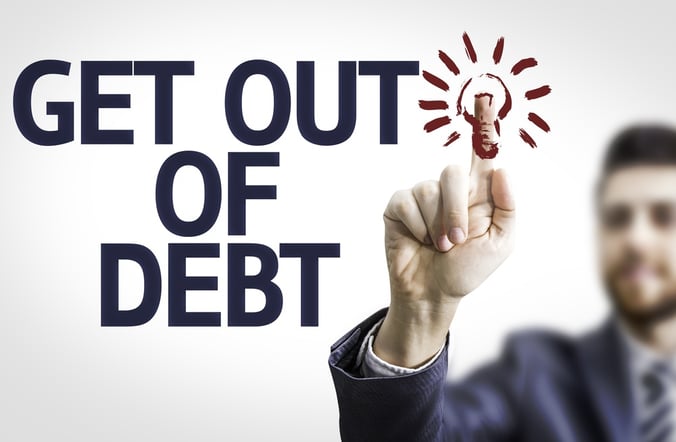
According to a study done by NerdWallet, in 2016 the average American household had $134,643 of debt. You could start looking closer at the amounts owed and what it’s for—like student loans, credit cards, mortgages—but the bottom line is that most US residents owe money.
Owing money isn’t always a bad thing. In fact, in today’s modern age it’s a necessary evil. To be able to make big, expensive purchases, you have to have credit. To establish credit, you have to go into debt. The problem is that some of that debt gets out of hand, and your credit takes a nosedive. And what happens then? Debt spirals out of control, and you score slips. Soon, you can’t get the things you need, like a home or a place to rent. You may even have a hard time buying a used car—which you need to get to work. That’s when it’s time tackle your debt, fix your credit and work to make better choices in the future.
Debt Pay Down – Where to Start
Paying down debt can seem like an insurmountable challenge. The first step to beating debt is to understand your finances. Most people get in trouble because they bite off more than they can chew. They also don’t follow what goes in or out of their bank account every month. Worse, they don’t even know what bills they have, and instead pay as it comes if they can.
To get rid of debt you have to know what you earn, what you can spend and what debts you have. Here are the first steps you can take toward getting rid of debt:
- Step 1: Create a budget – A budget is simple (kind of). List your income each month and subtract your expenses. That’s it! However, you’ll also want to start following where your money goes and how much you need each month to get by. You’ll also want to start saving. There are several free tools to help you budget. Download a budgeting app. Make budgeting a habit, and tweak your budget whenever you need to.
- Step 2: List your debt – The next step in debt reduction is to know what debt you have. Pull your credit report (it’s free!). Also, pile your credit card, mortgage and student loan statements. Make a list of everything you owe and the balances left on each.
- Step 3: Cut unnecessary luxuries – Once you have an accurate picture, you’ll want to start cutting down on luxuries. This means going to the coffee stand every morning, dining out, going to the movies and gym memberships you never use. You can buy a coffee maker, plan meals, have movie nights at home and work out anywhere. That money is the beginning of your debt paydown path. Of course, you’ll want place some in savings if you don’t have one. However, use a portion of it to get rid of unnecessary debt.
- Step 4: Tackle unnecessary debt – Start by looking at delinquencies, collections or any debt you have with high interest rates. That’s where you’ll want to begin. There are several methods for debt repayment, but in general, the snowball method works for most people. It’s straightforward, easy to understand and make things feel doable. There is something really important you’ll want to do before paying each debt though; make sure you try and negotiate. In other words, see if there is a way to settle it.
The Art of Negotiating with Creditors and Settling Debt
Many creditors want to get their money back. They also aren’t always invested in how much you owe, but are happy with what they can get. A great way to get rid of debt quicker is to work with creditors to settle in a way that makes both parties happy. There are some parameters you’ll want to follow though, especially so once the debt is paid off you have proof.
Start with a phone call to your creditor. Before you do, make sure you have read up thoroughly on how to handle negotiations. The aim is to reduce the debt and make it more affordable to pay off quicker. Honesty is always the best policy. Tell them you're trying to get your finances under control. Tell them you have limited funds. See what they can work out—and get it in writing. When the debt is paid, make sure to get that in writing too. Keep track of everything: letters, payments, check stubs, bank proof. Anything that supports the debt as paid.
If you don’t think you can do it yourself, try a debt settlement company. But be cautious, and make sure they have a good reputation.
If you need a used car, start working on your debt today.




